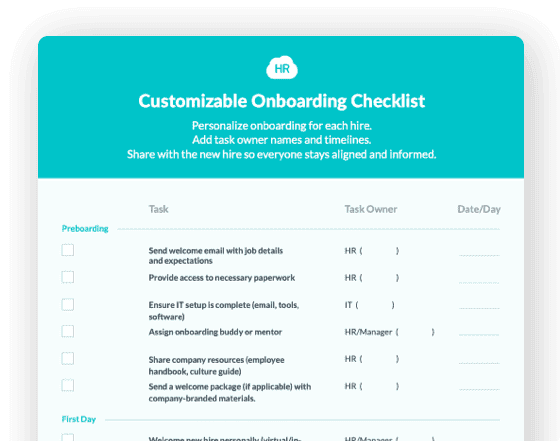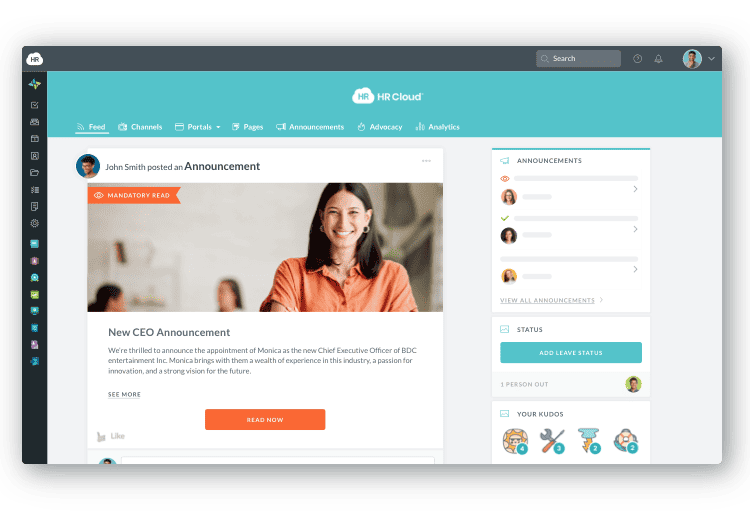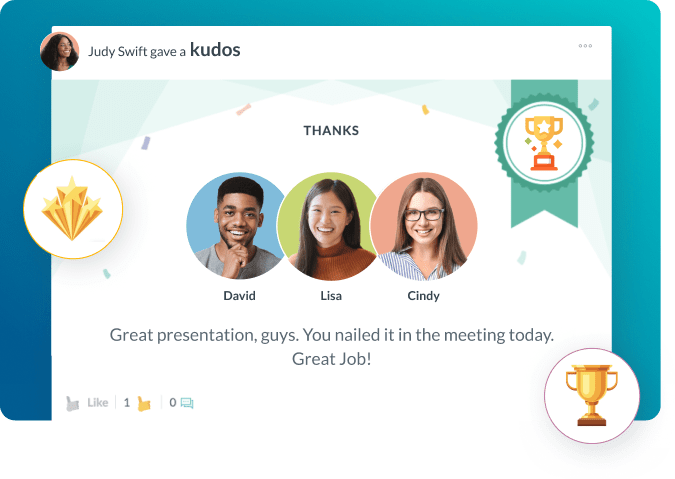Job Dissatisfaction
- Understanding the Core Elements of Job Dissatisfaction
- Comparing Job Dissatisfaction Indicators Across Different Workplace Factors
- Best Practices for Preventing and Addressing Job Dissatisfaction
- Pitfalls to Avoid When Tackling Job Dissatisfaction
- Industry Applications of Job Dissatisfaction Prevention
- Implementation Plan: Building a Satisfaction-Focused Culture
- Future Outlook: The Evolving Landscape of Employee Satisfaction

 Cut onboarding time
by 60%—here's the
Ultimate Checklist
that helped do it.
Cut onboarding time
by 60%—here's the
Ultimate Checklist
that helped do it.

Job dissatisfaction represents one of the most critical challenges facing modern organizations. When your employees feel unhappy, disconnected, or unfulfilled in their roles, the consequences extend far beyond individual morale. Recent data from Gallup shows that employee engagement has fallen to a 10-year low, with only 31% of U.S. workers feeling engaged in 2024. This decline signals a growing workplace crisis that demands immediate attention from business leaders and HR professionals alike.
At its core, job dissatisfaction describes the negative feelings and attitudes employees hold toward their work, workplace, or role. Unlike temporary frustration or stress, job dissatisfaction is a persistent state that undermines both individual performance and organizational success. It manifests when there's a meaningful gap between what employees expect from their jobs and what they actually experience. Understanding this phenomenon is not just an HR concern but a strategic business imperative that directly impacts your bottom line. Research indicates that disengaged employees cost companies between $450 and $550 billion annually in lost productivity, higher turnover, and decreased profitability.
The workplace landscape has shifted dramatically in recent years. Remote work, changing employee expectations, and economic pressures have created new sources of dissatisfaction while amplifying existing ones. What makes job dissatisfaction particularly challenging is its contagious nature. When one team member becomes disengaged, their negativity can spread throughout departments, eroding team culture and dragging down overall performance. For forward-thinking organizations, addressing job dissatisfaction is not about damage control. It's about creating environments where people genuinely want to contribute their best work.
Understanding the Core Elements of Job Dissatisfaction
Before you can solve job dissatisfaction, you need to recognize its key components. These elements help you identify where problems exist and what actions will create meaningful change.
Compensation Concerns:
Salary remains the top cause of dissatisfaction among U.S. workers, cited by 47% of employees, but it's often about perceived fairness rather than absolute numbers
Lack of Recognition:
Employees who feel undervalued become disengaged quickly, with 79% citing feeling underappreciated as their primary reason for leaving jobs
Limited Growth Opportunities:
When people can't see a clear path forward in their careers, they start looking elsewhere for development and advancement
Poor Management Practices:
Managers account for 70% of the variance in team engagement, making leadership quality a critical factor in employee satisfaction
Work-Life Imbalance:
Burnout from excessive workloads and blurred boundaries between personal and professional time creates lasting dissatisfaction
Inadequate Resources:
When employees lack the tools, information, or support needed to succeed, frustration builds into chronic dissatisfaction
Comparing Job Dissatisfaction Indicators Across Different Workplace Factors
|
Workplace Factor |
High Satisfaction Signal |
Dissatisfaction Warning Sign |
Business Impact |
|
Compensation & Benefits |
Competitive pay aligned with market rates; comprehensive benefits package |
Salary below market average; minimal benefits; no raises or bonuses |
Higher turnover; difficulty recruiting; decreased productivity |
|
Recognition & Appreciation |
Regular acknowledgment; peer-to-peer recognition programs; celebration of wins |
Accomplishments ignored; only negative feedback given; no formal recognition system |
Lower morale; reduced effort; talent flight to competitors |
|
Career Development |
Clear advancement paths; skill-building opportunities; mentorship programs |
No growth opportunities; stagnant roles; limited training budget |
Loss of high performers; skill gaps; decreased innovation |
|
Management Quality |
Supportive leaders; regular feedback; transparent communication |
Micromanagement; unclear expectations; poor communication |
Team dysfunction; increased stress; voluntary departures |
|
Work Environment |
Collaborative culture; healthy work-life balance; adequate resources |
Toxic atmosphere; excessive overtime; insufficient tools |
Burnout; absenteeism; quality issues |
Best Practices for Preventing and Addressing Job Dissatisfaction
The organizations that successfully combat job dissatisfaction share common approaches. They treat employee satisfaction as a strategic priority rather than an afterthought. Here's how you can do the same.
Start by creating meaningful feedback loops. Employee engagement surveys provide invaluable insights into what's working and what isn't, but only when you act on the results. Deploy pulse surveys to take the temperature of your workforce regularly. These quick check-ins help you catch problems before they escalate into full-blown crises.
Implement Robust Recognition Programs:
Use platforms like HR Cloud's employee recognition solution to make appreciation visible, frequent, and meaningful across your organization
Invest in Manager Development:
Since managers have such outsized influence on team satisfaction, prioritize training programs that build their coaching and people management skills
Create Transparent Career Pathways:
Show employees exactly how they can grow within your organization through clear job ladders, skill development plans, and promotion criteria
Address Compensation Proactively:
Conduct regular market reviews to ensure your pay remains competitive, and communicate clearly about how compensation decisions are made
Foster Work-Life Integration:
Offer flexibility where possible and set clear boundaries around after-hours communication to prevent burnout
Build a Culture of Listening:
Create multiple channels for employees to voice concerns, and demonstrate that their input leads to tangible changes
Pitfalls to Avoid When Tackling Job Dissatisfaction
Even well-intentioned efforts to improve satisfaction can backfire if you make these common mistakes. Understanding what doesn't work is just as important as knowing what does.
Many organizations fall into the survey trap. They gather extensive feedback through employee engagement metrics but fail to take action on what they learn. This creates cynicism and deepens dissatisfaction as employees conclude their voices don't matter. When you ask for input, you're making an implicit promise to respond. Breaking that promise does more harm than never asking at all.
Treating All Dissatisfaction the Same:
Different employee segments have different needs. Gen Z workers prioritize growth opportunities while experienced employees may value stability and recognition
Focusing Solely on Perks:
Free snacks and ping pong tables won't fix fundamental problems like poor management or lack of career development
Ignoring the Role of Managers:
No amount of organizational initiatives will overcome a toxic or ineffective direct manager
Making Assumptions About Causes:
What leadership thinks drives dissatisfaction often differs dramatically from what employees actually experience
Implementing One-Size-Fits-AllSolutions:
Cookie-cutter approaches rarely address the specific issues affecting different teams or departments


Industry Applications of Job Dissatisfaction Prevention
The principles of addressing job dissatisfaction apply across sectors, but the specific approaches vary based on industry dynamics and workforce characteristics.
In the healthcare industry, dissatisfaction often stems from overwhelming workloads and emotional exhaustion. Forward-thinking healthcare organizations combat this through strategic employee retention practices that include flexible scheduling, mental health support, and recognition programs that acknowledge the emotional labor inherent in patient care. They also invest heavily in technology that reduces administrative burden, allowing caregivers to focus on what drew them to healthcare in the first place.
Technology companies face different challenges. Their employees often cite lack of work-life balance and unclear growth paths as primary dissatisfaction drivers. Successful tech firms address this through transparent promotion processes, regular skip-level meetings that give employees access to senior leaders, and performance management systems that provide continuous feedback rather than annual reviews. They also create technical career tracks that allow individual contributors to advance without moving into management.
Retail organizations struggle with high turnover driven by low pay, irregular schedules, and feeling undervalued. Leaders in this space are transforming the employee experience by implementing engagement strategies designed specifically for frontline workers. This includes mobile-first communication tools, shift-swapping flexibility, and peer recognition systems that make appreciation visible across locations.
Implementation Plan: Building a Satisfaction-Focused Culture
Creating lasting change requires a systematic approach. Follow this roadmap to transform job dissatisfaction into genuine engagement.
Phase 1: Assess Current State (Weeks 1 to 4)
Begin by gathering comprehensive data about satisfaction levels across your organization. Deploy both quantitative surveys and qualitative interviews to understand the full picture. Segment your analysis by department, tenure, and role to identify where problems are most acute. Review your existing employee retention metrics and turnover data to establish baselines you'll measure against.
Phase 2: Prioritize and Plan (Weeks 5 to 8)
Resist the urge to tackle everything at once. Identify the three factors causing the most widespread dissatisfaction and focus there first. Form cross-functional teams to develop action plans for each priority area. Make sure these teams include frontline employees who experience the issues firsthand, not just HR and leadership.
Phase 3: Launch Quick Wins (Weeks 9 to 12)
While you work on systemic changes, implement some immediate improvements that demonstrate your commitment. This might include starting a peer recognition program, adjusting a frustrating policy, or increasing manager check-in frequency. These visible actions build credibility and patience for longer-term initiatives.
Phase 4: Execute Major Initiatives (Months 4 to 9)
Roll out your primary interventions in phases. This might include revamping your compensation structure, launching a new employee recognition platform, or redesigning career development programs. Communicate extensively about what's changing and why. Provide training and resources to managers who will drive these changes at the team level.
Phase 5: Monitor and Adjust (Ongoing)
Establish regular check-ins to measure progress against your baseline metrics. Use pulse surveys every quarter to track sentiment shifts. Be prepared to adjust your approach based on what the data tells you. Schedule quarterly leadership reviews of satisfaction initiatives to ensure they remain a strategic priority rather than an HR-only concern.
Future Outlook: The Evolving Landscape of Employee Satisfaction
The factors driving job dissatisfaction continue to evolve as workplace dynamics shift. Recent Gallup research shows concerning trends, including a global cost of $8.8 trillion in lost productivity due to disengagement. Understanding emerging patterns helps you stay ahead of dissatisfaction before it takes root in your organization.
Artificial intelligence is reshaping what employees expect from work. While AI promises to eliminate tedious tasks, it also creates anxiety about job security and skill obsolescence. Organizations that successfully navigate this transition will proactively reskill their workforce and clearly communicate how AI enhances rather than replaces human roles. The companies that ignore these concerns will see dissatisfaction spike as uncertainty grows.
The next generation of workers brings fundamentally different expectations. Gen Z employees, in particular, prioritize purpose, flexibility, and continuous learning over traditional loyalty. They're also more willing to leave when dissatisfied. Smart organizations are redesigning their employee retention strategies to emphasize these values while maintaining the structure and stability that appeals to longer-tenured employees.
The hybrid work environment continues to present both opportunities and challenges for satisfaction. Remote workers report higher satisfaction in some areas but also feel more disconnected from company culture and career opportunities. The organizations winning this balance provide intentional touchpoints that build relationships and visibility without forcing unnecessary office time. They also ensure remote employees have equal access to recognition, development, and advancement opportunities.
Looking ahead, the most successful organizations will treat job satisfaction as a competitive advantage rather than a cost center. They'll invest in the systems, training, and cultural shifts needed to create workplaces where people genuinely want to contribute their best work. The data is clear: when employees feel satisfied, engaged, and valued, everyone wins. Your customers receive better service, your shareholders see stronger returns, and your people build fulfilling careers. That's the future of work worth building.
Keep Reading
Credential Tracking in Healthcare: How to Automate License Renewals and Stay Audit-Ready
A nurse shows up ready for her shift but her license expired yesterday. You scramble for
Onboarding 500 Nurses a Year: Lessons from High-Volume Hospital HR Teams
Hiring 5 nurses can be done off-the-cuff. But hiring 500 is a logistics operation by
AI for Frontline HR: Moving Beyond Sentiment Analysis to Build Tomorrow's Workforce Management Engine
TL;DR: While most organizations limit artificial intelligence in human resources to basic
Ready to streamline your onboarding process?
Book a demo today and see how HR Cloud can help you create an exceptional experience for your new employees.







